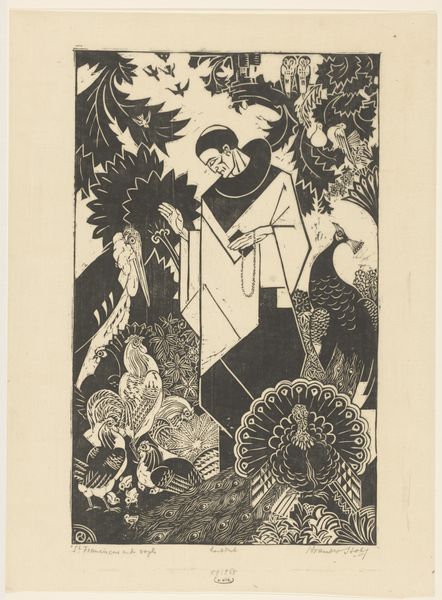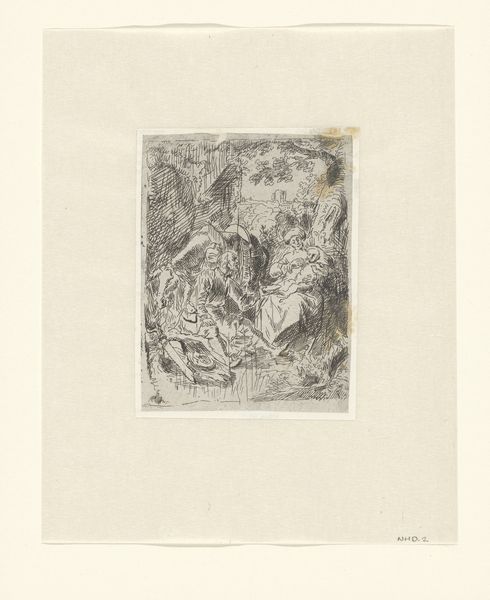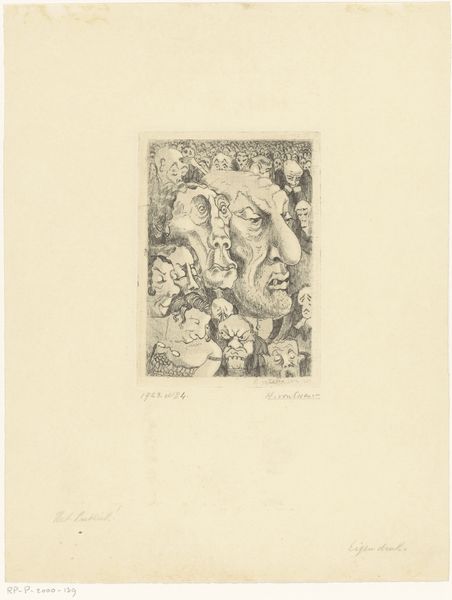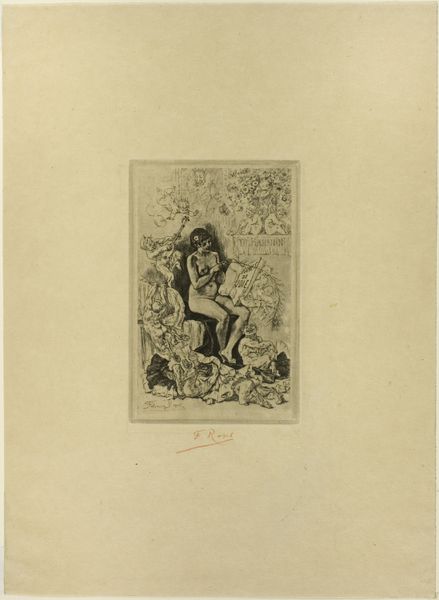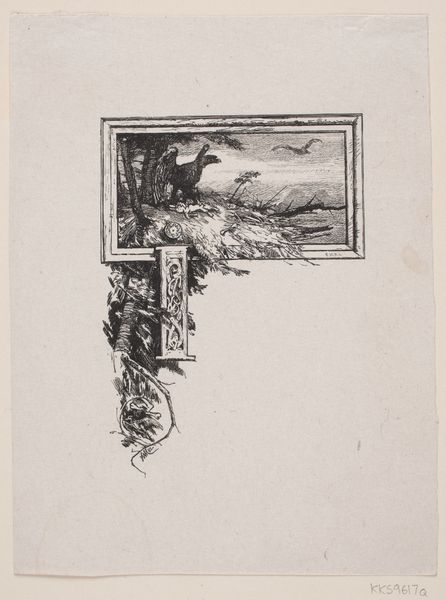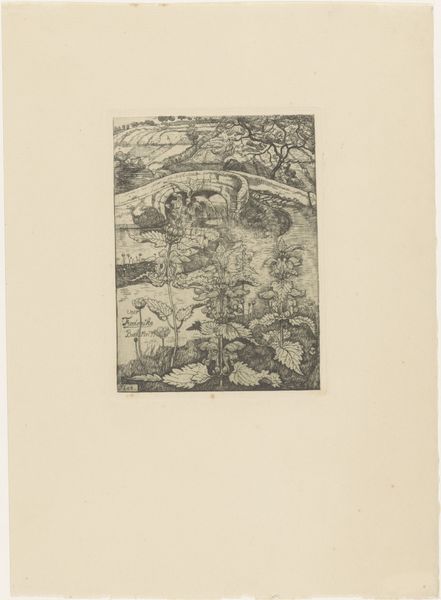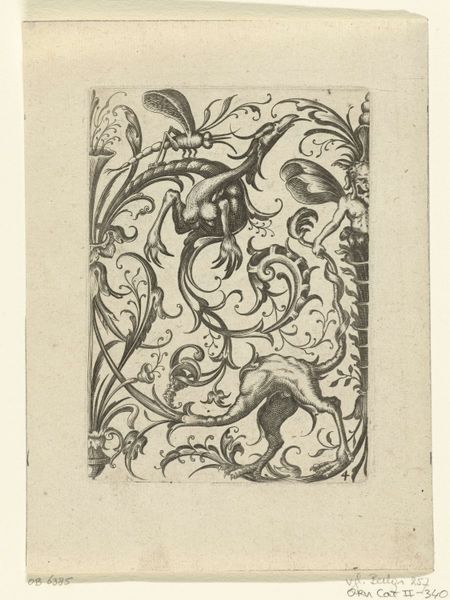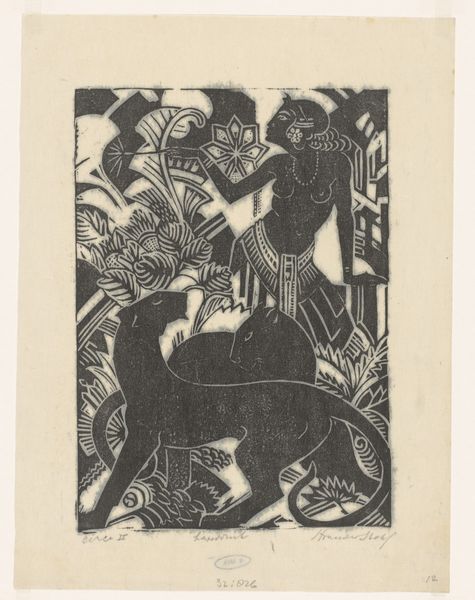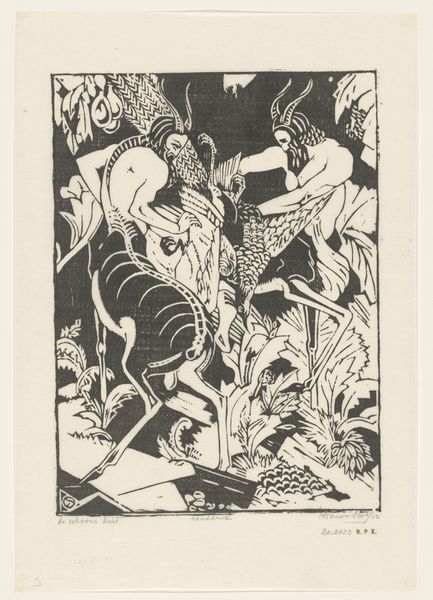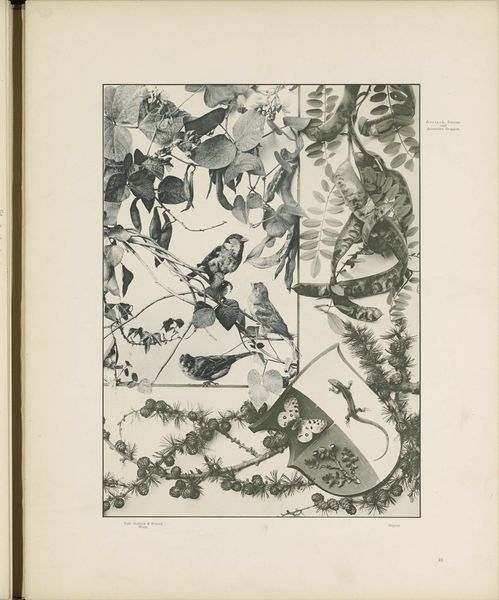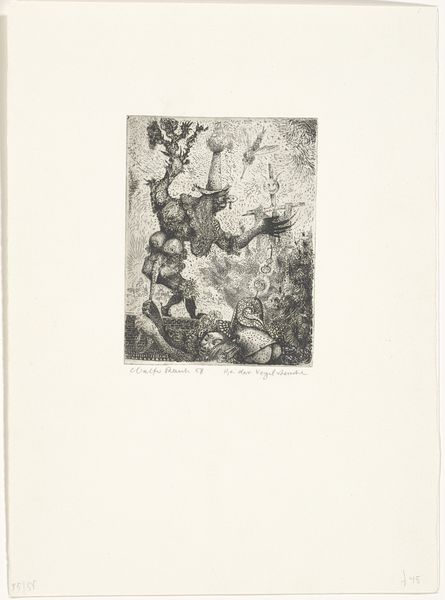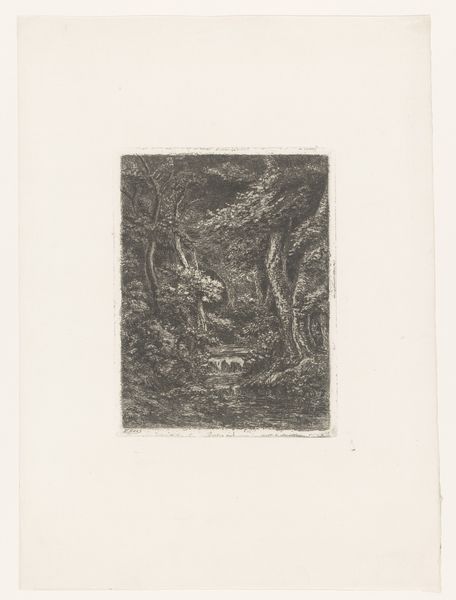
drawing, print, ink, engraving
#
drawing
#
narrative-art
# print
#
landscape
#
figuration
#
ink
#
line
#
symbolism
#
genre-painting
#
engraving
Dimensions: 297 mm (height) x 218 mm (width) (bladmaal)
Editor: Here we have Waldemar Böhme’s "Adam Giver Dyrene Navne," or "Adam Naming the Animals," created between 1910 and 1915, using drawing, print, and engraving techniques in ink. There's something so quaint and innocent about this image, like an illustration from a fairytale book. What stands out to you in this piece? Curator: The image speaks volumes about our ingrained relationship with the natural world and the symbolic power we ascribe to animals. Adam, in his act of naming, isn't just labeling; he's establishing a hierarchy, a dominion. The lion, the goose, even the tortoise—each represents different facets of our understanding of nature’s order. Consider how this resonates with cultural memories of the Garden of Eden as a time of perfect harmony and human authority. Editor: I hadn't thought of the act of naming as an act of power before. Curator: And look at how the style itself contributes to this. The lines, so clear and deliberate, echo a kind of primal simplicity. It almost mimics the visual language we associate with early printed books, connecting us back to a time when images held a sacred significance and carried moral weight. Does the border remind you of anything? Editor: It’s beautiful, detailed...like a manuscript illumination. So, even the way it’s presented reinforces this idea of a foundational story, passed down through generations? Curator: Precisely! The artist seems to use symbolism not just to illustrate a scene but to tap into deeply rooted cultural narratives about humanity's place in the world, in contrast to an earlier nature, full of its own inherent power and danger, as represented in the wilderness. The serpent is of course noticeably absent, allowing innocence and harmony to exist here. It is as it should be. Editor: That's really insightful. I came in seeing a simple illustration, but now I see layers of meaning related to power and cultural memory. Thanks! Curator: It’s in exploring those layers that we find the enduring relevance of images, isn’t it?
Comments
No comments
Be the first to comment and join the conversation on the ultimate creative platform.

